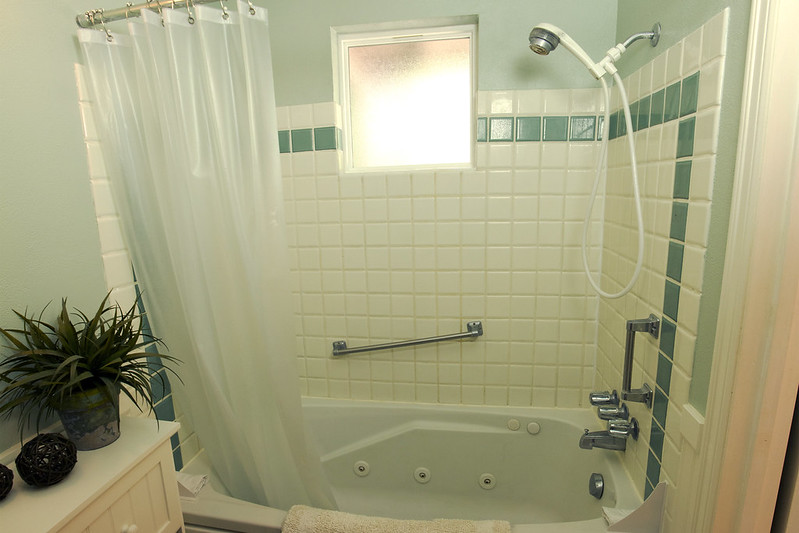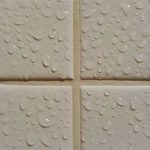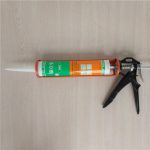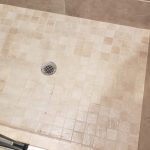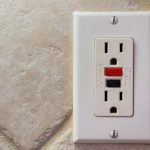Having the grout wash away in your shower can be a frustrating and expensive problem to fix.
It can also be dangerous, as it can lead to water damage and mold growth. So why is the grout washing away in your shower?
There are several potential causes, from improper installation to poor maintenance. In this article, we will discuss why the grout is washing away in your shower, how to prevent it from happening again, and what steps you can take to repair any damage that has already occurred.
We’ll also provide some tips on how to keep your shower grout looking great for years to come.
By understanding the causes of the grout washing away and taking the necessary steps to prevent it, you can save yourself time, money, and hassle.
Contents
- 1 Why Is The Grout Washing Away In Shower?
- 2 How to Prevent Grout Washing Away in Shower
- 3 Advantages of Using Epoxy Grout
- 4 Disadvantages of Using Epoxy Grout
- 5 How To Repair Grout Washing Away In Shower
- 6 Benefits of Sealing Grout In Shower
- 7 Different Types Of Grout Sealers
- 8 How To Apply Grout Sealer In Shower
- 9 Common Mistakes When Applying Grout Sealer In Shower
- 10 Tips For Maintaining Grouted Shower Areas
- 11 Things To Consider When Installing Grout In Shower
- 12 Conclusion
Why Is The Grout Washing Away In Shower?
Grout washing away in the shower can be caused by a variety of factors.
The most common cause is improper installation of the grout, which can lead to water seeping into the joints and causing the grout to erode over time. Other causes include excessive moisture, poor ventilation, and inadequate cleaning.
All of these can lead to the grout washing away from the shower walls and floors.
How to Prevent Grout Washing Away in Shower
The best way to prevent grout from washing away in the shower is to ensure proper installation.
This includes using quality grout that is designed for use in wet areas and ensuring that it is installed correctly with enough space between tiles for water to escape.
Additionally, proper ventilation should be installed in the bathroom to reduce moisture levels, and regular cleaning should be done to remove any dirt or debris that may be contributing to the problem.
Advantages of Using Epoxy Grout
Epoxy grout is a popular choice for showers due to its durability and resistance to water damage.
It is also resistant to staining and mold growth, making it an ideal choice for wet areas such as showers.
Additionally, epoxy grouts are easy to install and require minimal maintenance, making them a great option for those looking for a long-lasting solution.
Disadvantages of Using Epoxy Grout
Although epoxy grouts are durable and resistant to water damage, they are not without their disadvantages.
They are more expensive than traditional grouts, require special tools for installation, and can be difficult to repair if damaged.
Additionally, epoxy grouts are not suitable for all surfaces and must be used with caution on porous surfaces such as natural stone or concrete.
How To Repair Grout Washing Away In Shower
If you have noticed that your grout is washing away in the shower, there are a few steps you can take to repair it.
First, you should remove any loose or damaged grout with a chisel or other tool designed for this purpose.
Then, you should mix up some new grout according to the manufacturer’s instructions and apply it with a trowel or float it into the affected area, making sure that it is firmly packed into place before allowing it to dry completely.
Benefits of Sealing Grout In Shower
Sealing your shower’s grout can provide many benefits, including preventing water damage, mold growth, and staining of the tile surface.
Sealing also helps protect against dirt and debris buildup, which can contribute to the erosion of your grout over time.
Additionally, sealing will make your shower easier to clean since dirt and debris will not be able to penetrate the pores of your tile surface as easily without sealing it first.
Different Types Of Grout Sealers
There are several different types of sealers available on the market today, including acrylic sealers, polyurethane sealers, silicone sealers, epoxy sealers, and polyester sealers.
Each type has its advantages and disadvantages, so it’s important to research each option carefully before deciding which one is best suited for your needs.
How To Apply Grout Sealer In Shower
Grout is a cement-like substance that fills gaps between tiles in a shower or floor.
A grout sealer is used to protect the grout from staining and water damage. Grout sealer is inexpensive and easy to apply, making it one of the best ways to prevent water damage in your home.
Grout sealer is easy to apply using a paintbrush or a grout sealer applicator. When applying grout sealer, it’s important to make sure that it is completely dry before you begin grouting.
Brush the grout with a stiff-bristled brush to remove dust and debris before applying the grout sealer. Use a grout brush to clean the gaps between the tiles.
Use the grout sprayer to apply grout sealer to the grout. The grout sealer should be thoroughly distributed over the grout surface.
The grout sealer should be applied evenly across the tiles and grout joints to ensure complete coverage. Let it dry completely, and repeat the process if required.
Common Mistakes When Applying Grout Sealer In Shower
Grout sealer is a water-based solution that helps protect your grout lines and tiles from discoloring or staining.
It helps keep your tiles looking fresh and clean for a long time, and is easy to use. However, if applied incorrectly, it can end up damaging your tiles or grout lines instead.
There are some common mistakes people make when installing grout sealer in their showers that can damage their tiles and grout lines.
Here are some of the most common ones to avoid:
Not thoroughly cleaning the tiles beforehand
Before applying grout sealer, you should ensure that any soap scum or dirt is removed from your tiles by scrubbing them thoroughly with soap and water.
Doing this will prevent any dirt or particles from settling in the grout lines or on the tiles after the grout sealer has been applied.
Using too much grout sealer
Before applying the grout sealer, you should mix the solution thoroughly using a sponge or brush to make sure that all the grout lines are evenly coated.
If the grout lines are not evenly coated, you will end up with uneven results, which can be unsightly and unattractive.
Not allowing the grout sealer to dry completely before wiping it clean
You should allow the grout sealer to dry completely before wiping it clean.
If you don’t allow the grout sealer to dry completely, it may end up leaving a glossy finish on the tile surface, which can make the tiles slippery.
Failing to wipe the grout lines clean after applying grout sealer
After applying the grout sealer to your tiles, you should wipe the grout lines clean with a soft cloth to remove any excess grout sealer from the tile surface.
Doing this will ensure that the grout lines remain clean and are not discolored or stained by the grout sealer.
Tips For Maintaining Grouted Shower Areas
Keeping your grouted shower area clean can be challenging, but here are some tips to help you prevent mold and mildew from growing in and around your bathroom.
Remove soap scum
Soap scum is caused when soap mixes with water and forms a film that sticks to your shower walls. Use white vinegar to remove soap scum buildup and keep mold out of your bathroom.
Use a mild cleaner
Mild cleaners are gentle and won’t damage your grout. Use bleach-based cleaners sparingly because they can discolor the grout.
Avoid abrasive cleaners
Harsh cleaners can scratch your grout and cause damage. Avoid scrubbing too hard or scrubbing with harsh brushes.
Use a grout-cleaning brush instead.
Use an all-purpose cleaner
Mix water and baking soda in equal parts to create a gentle cleaning solution that’s effective on soap scum, mildew, mold, and other grime.
Use a squeegee
Squeegeeing your shower after each shower helps prevent soap scum from accumulating and helps you avoid scrubbing too hard on your grout.
Use caulk
Caulk is useful for sealing up cracks and gaps around your shower area to prevent mold and mildew from growing and spreading to other areas of your bathroom.
Things To Consider When Installing Grout In Shower
When installing grout in a shower, there are several important things to consider.
First, it is important to choose the right type of grout for the job. Grout comes in a variety of materials, including epoxy, cement-based, and urethane.
Each type has its advantages and disadvantages, so it is important to select the one that best suits your needs.
Second, it is important to make sure that the grout is properly sealed after installation.
This will help prevent water from seeping into the grout and washing it away over time. Third, it is essential to use a high-quality sealant when installing grout in a shower.
This will ensure that the grout is protected from water damage and will last longer.
Finally, it is important to regularly clean and reseal the grout to keep it looking its best and prevent further damage.
By following these steps, you can ensure that your shower grout will stay in place for many years to come.
Conclusion
The grout washing away in the shower is a common problem for many homeowners.
It can be caused by a variety of factors, including poor installation, improper maintenance, and water damage. To address this issue, it is important to identify the cause and take steps to correct it.
This may involve replacing or repairing the grout, sealing the area, or using a waterproofing product.
Additionally, regular cleaning and maintenance of the shower can help prevent future damage.
By taking these steps, homeowners can ensure that their showers remain safe and functional for years to come.

